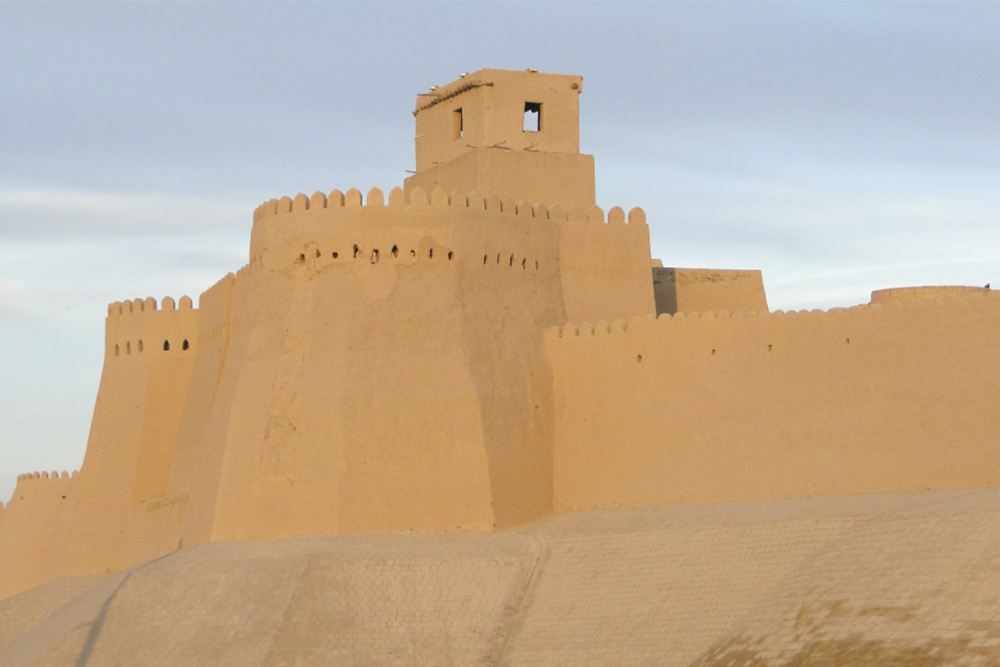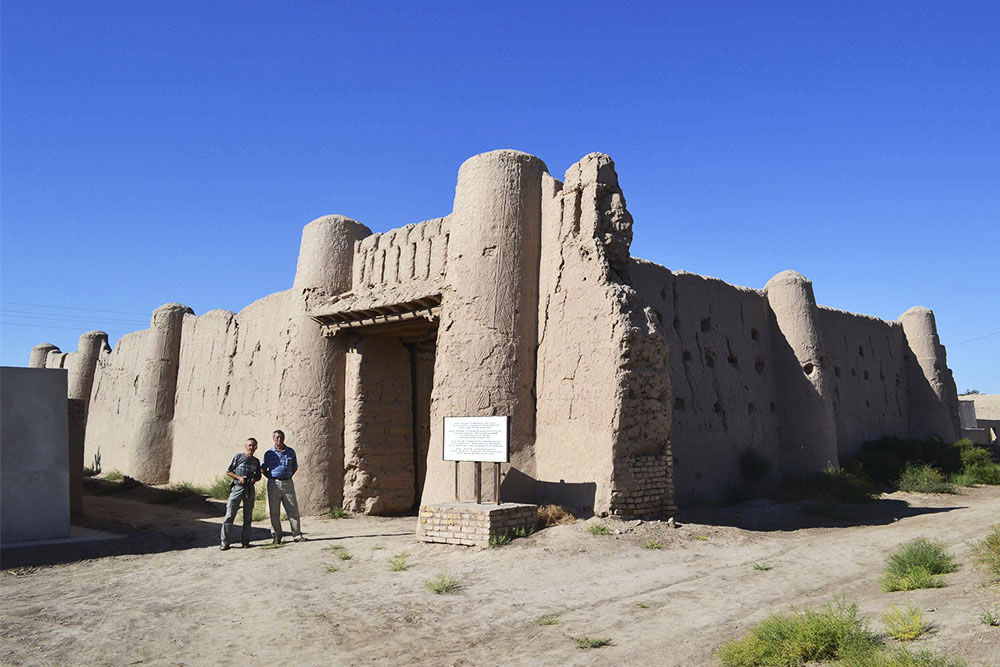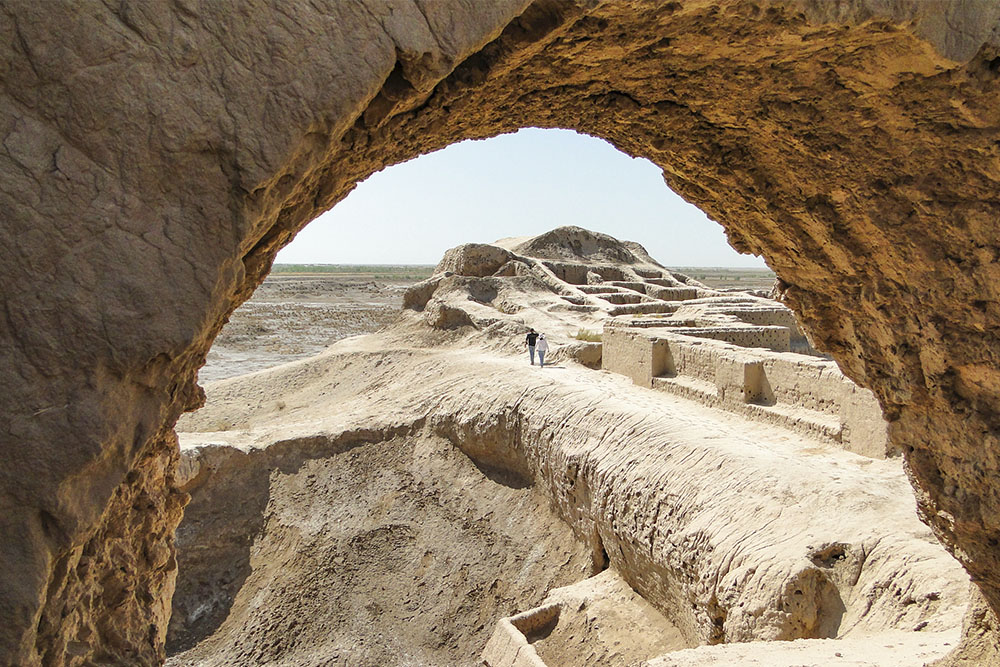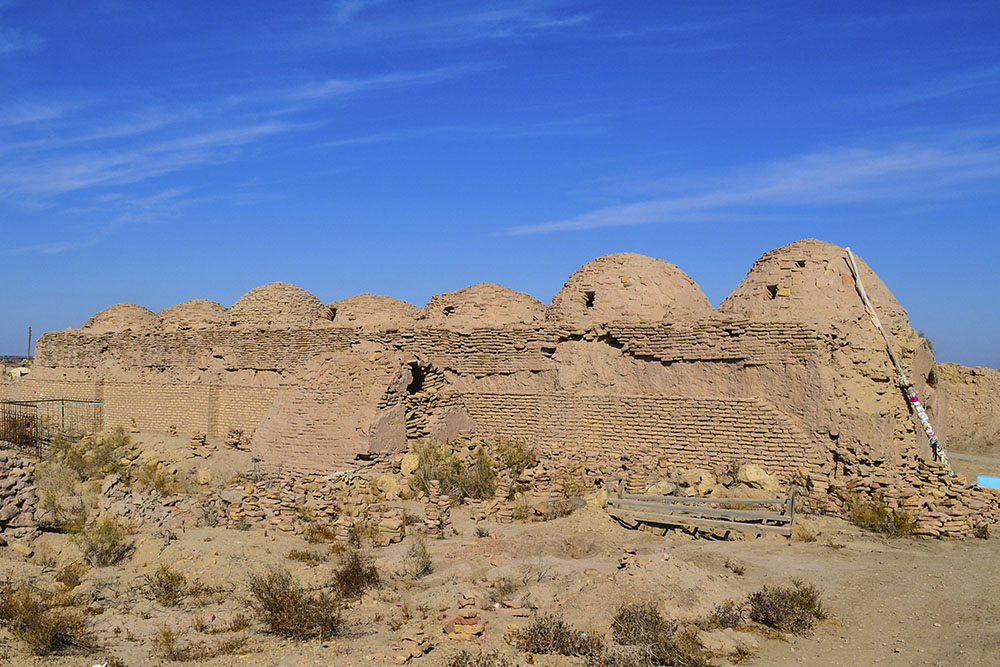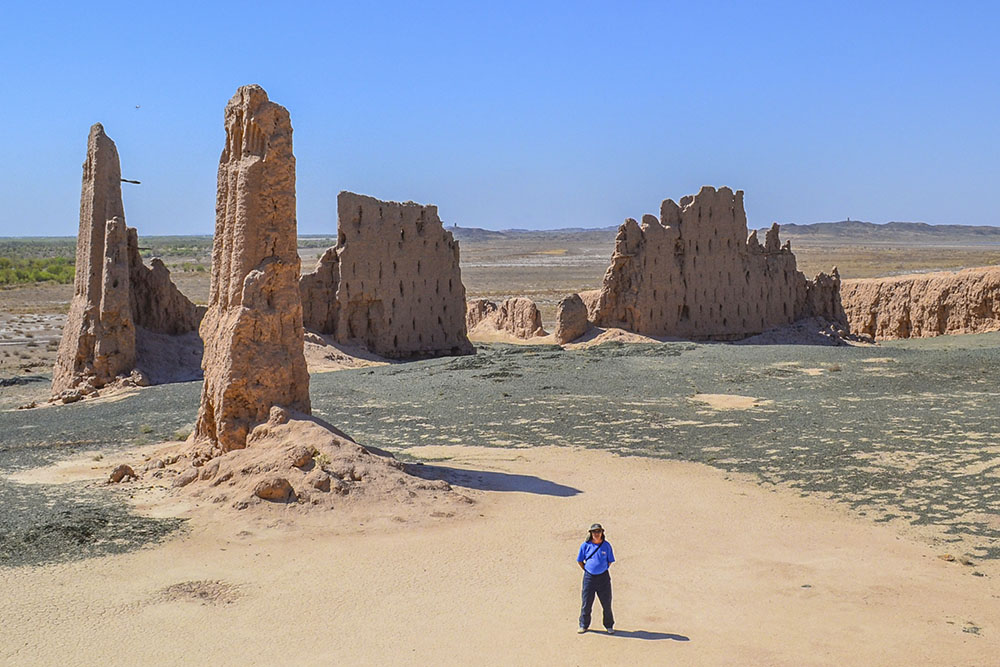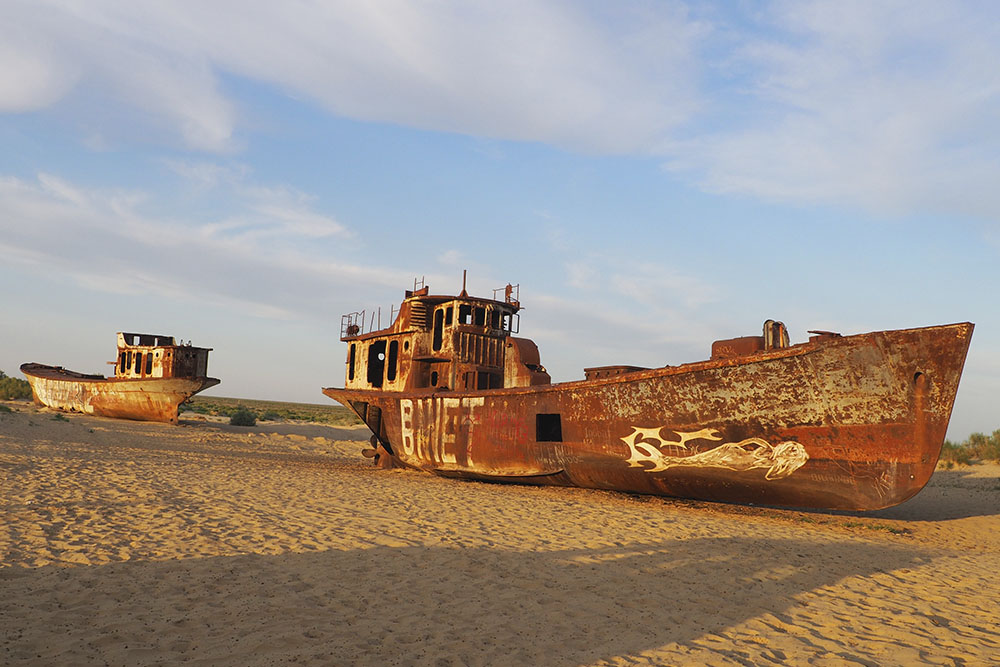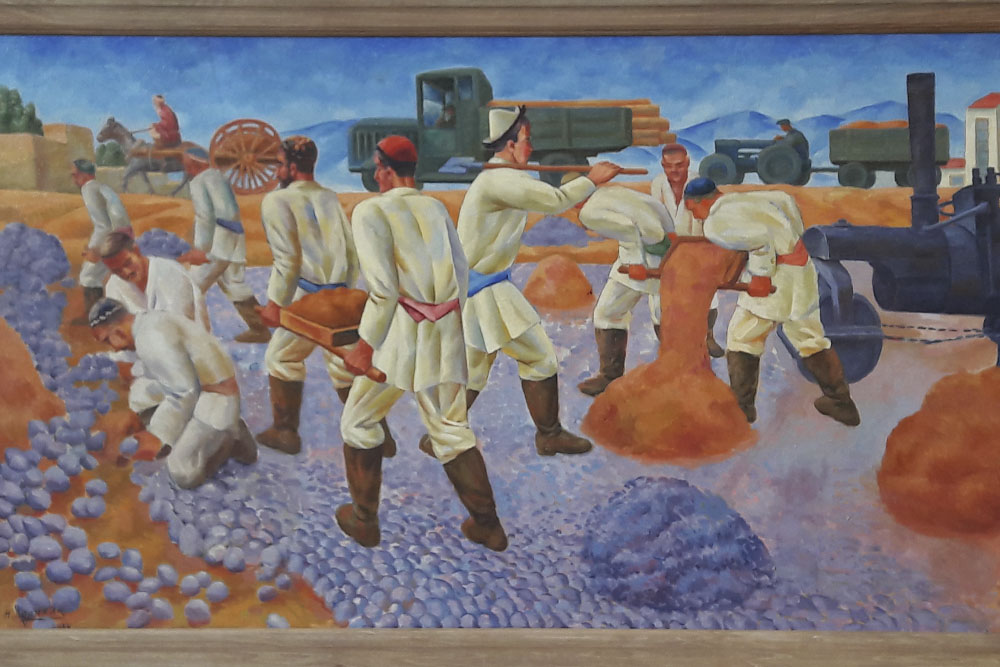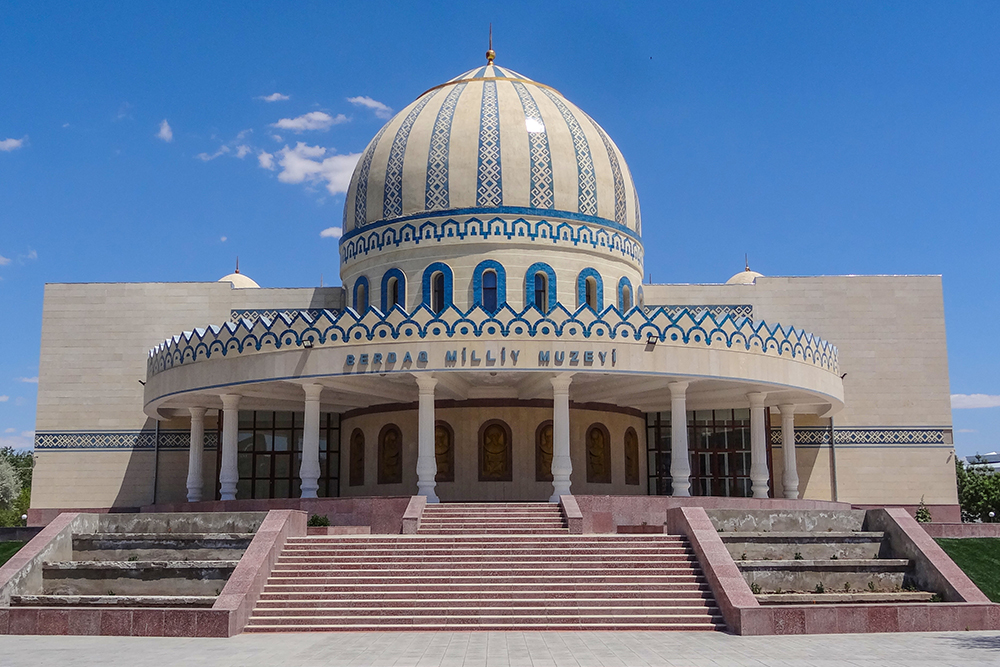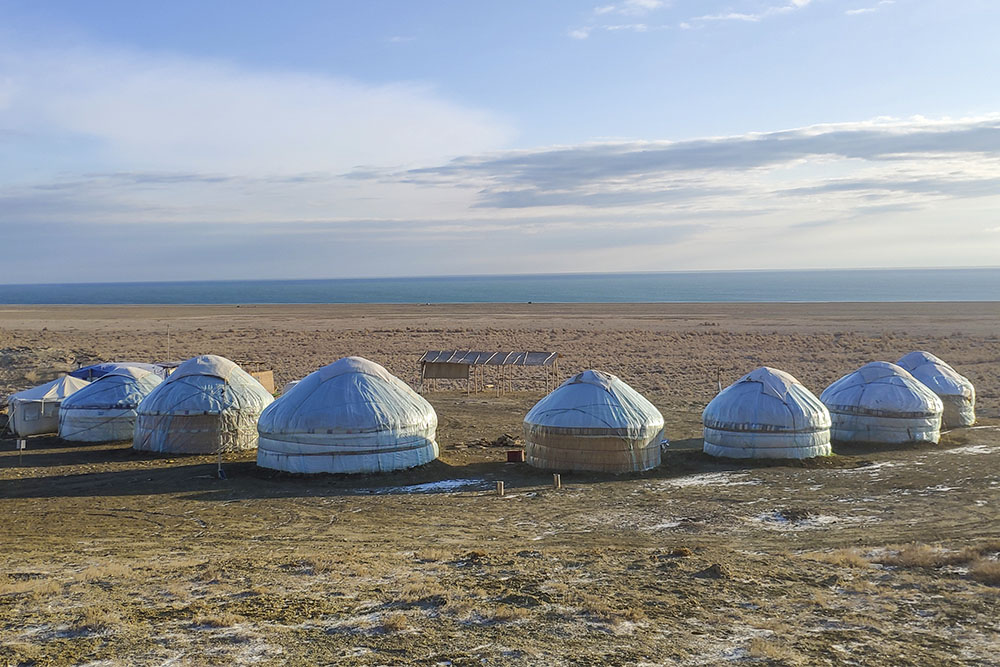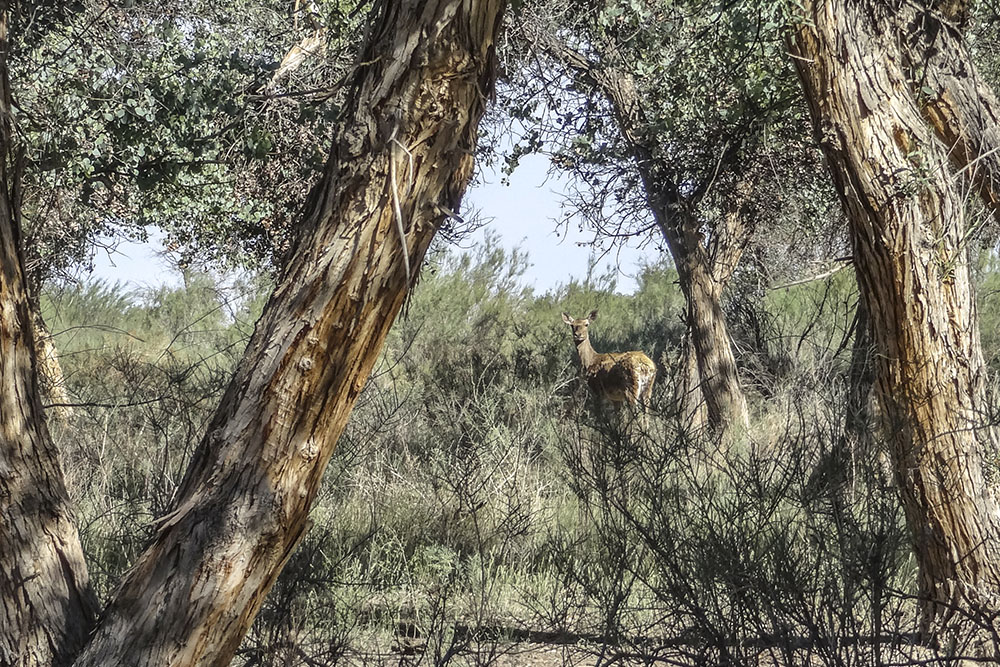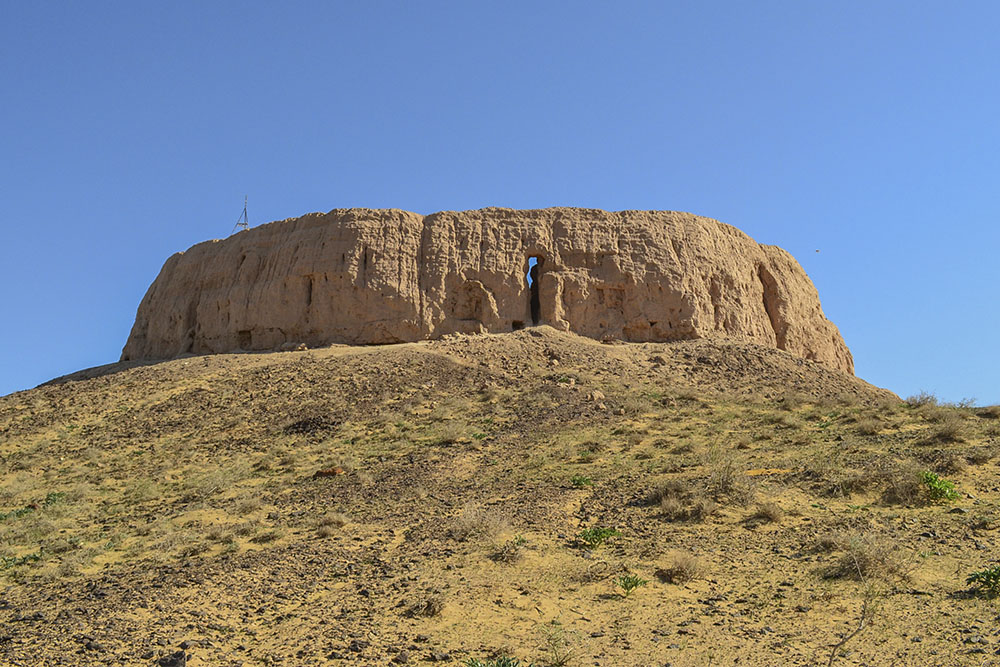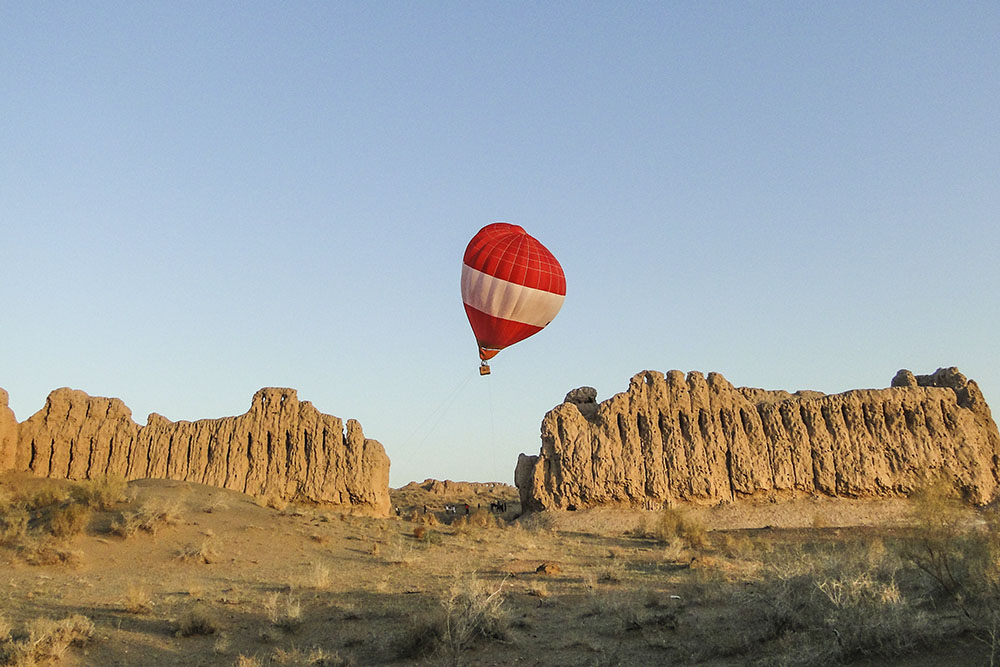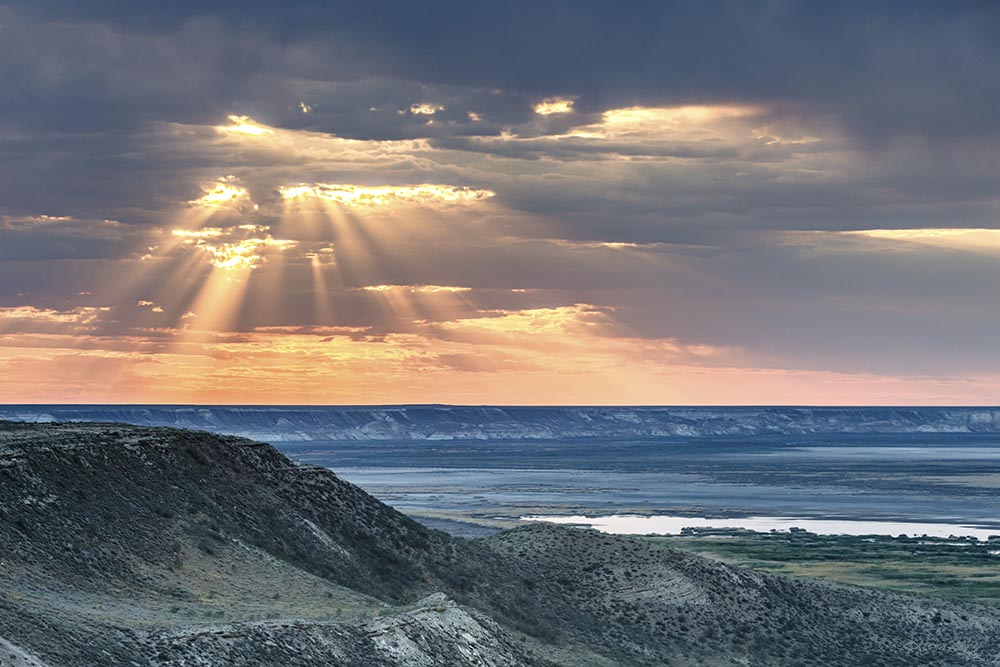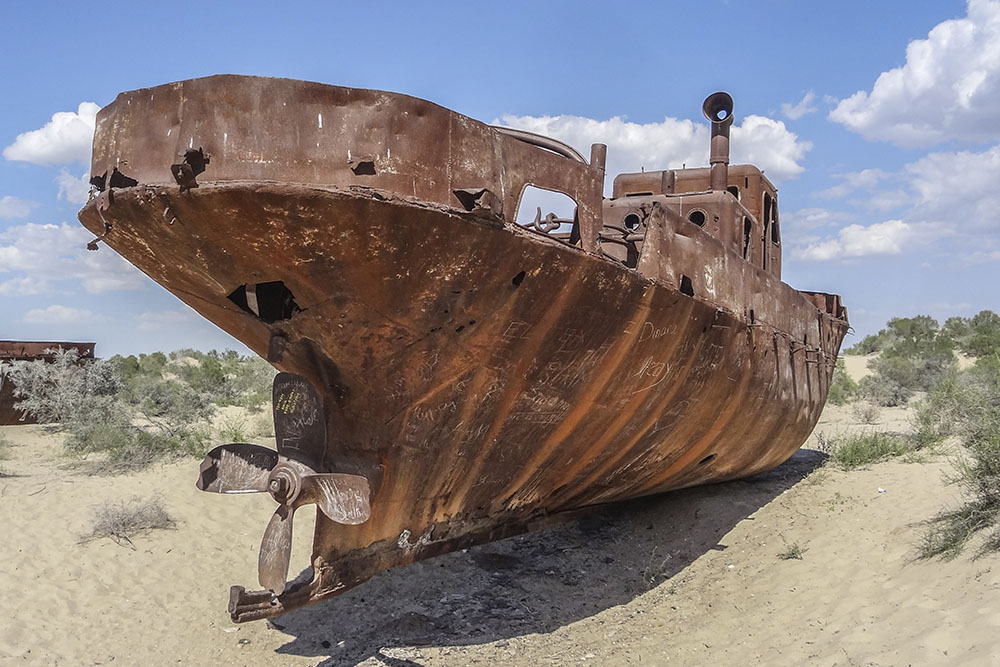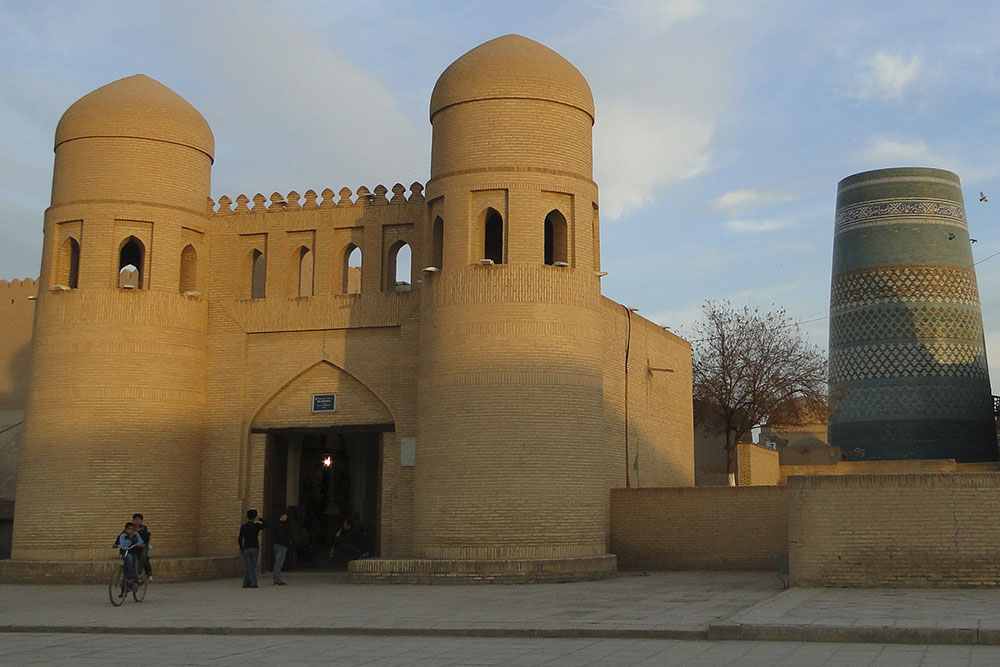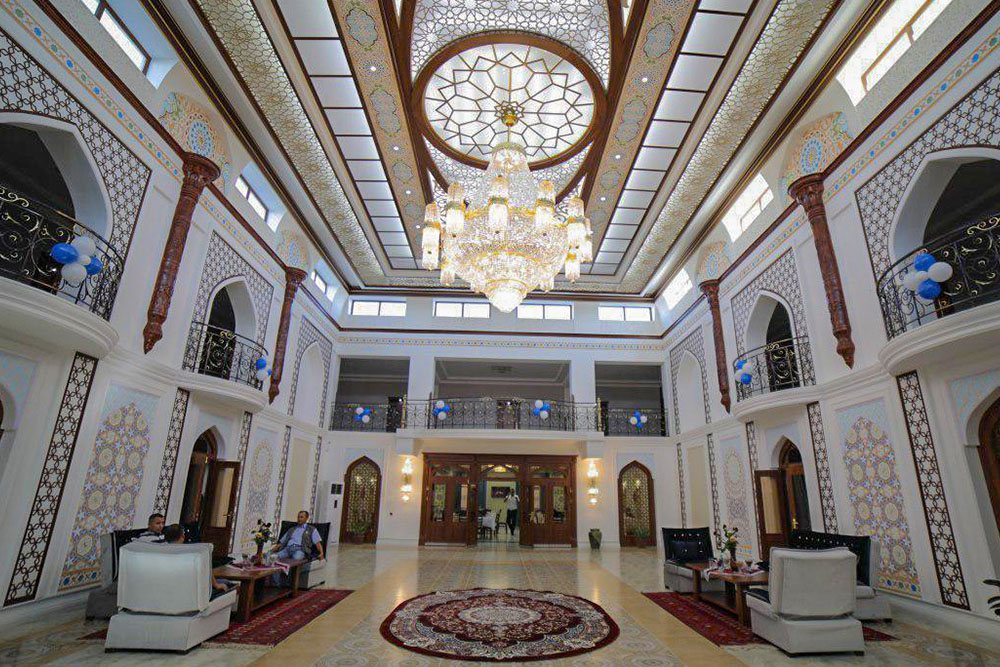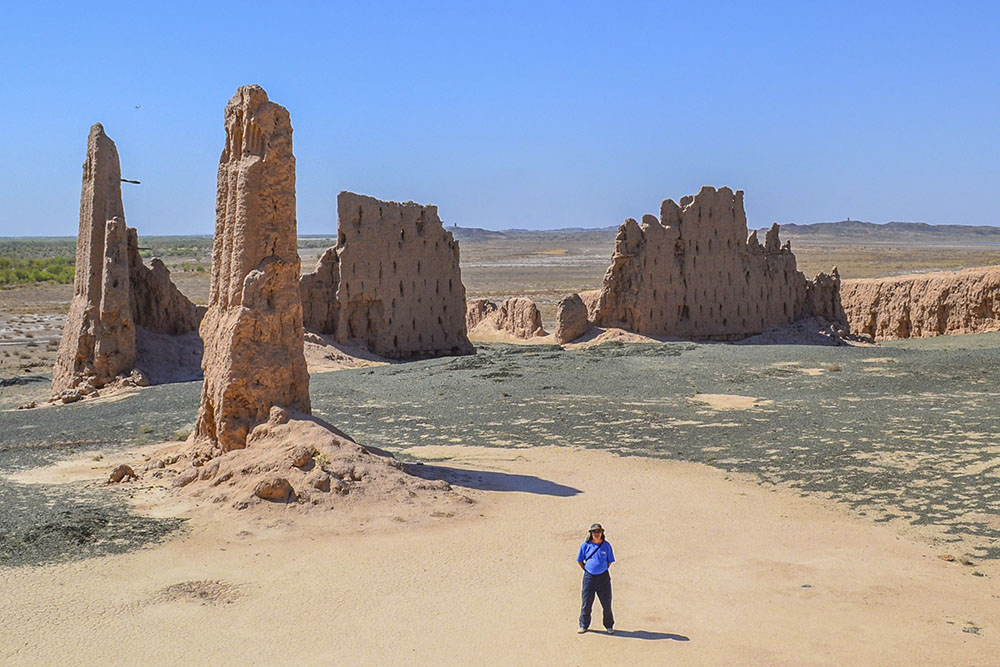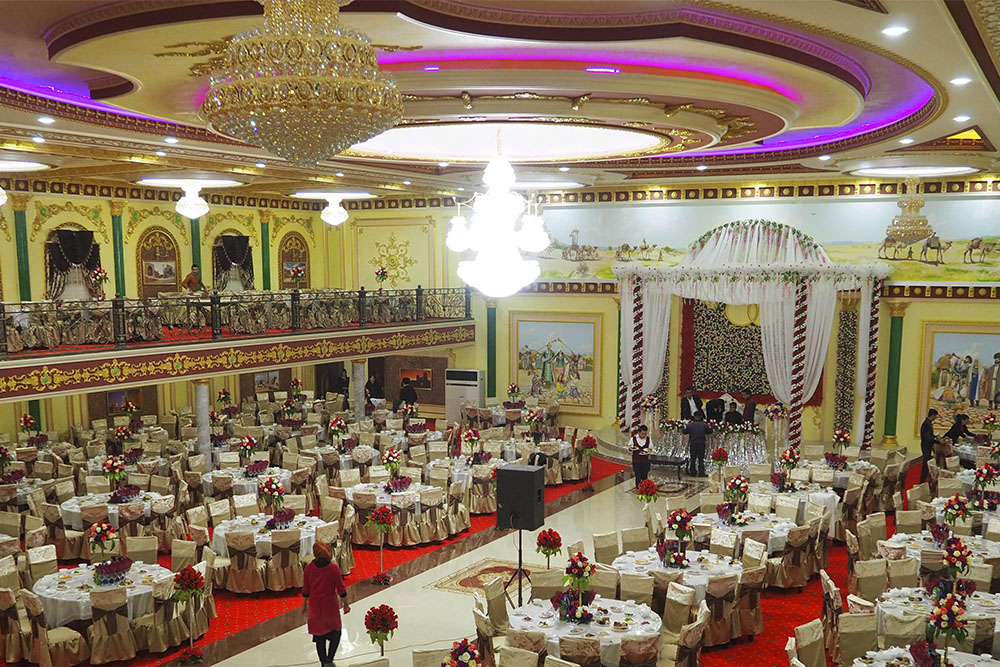Horezm is a fertile oasis located in lower reaches of Amudariya river that flows between Karakum desert and Kyzylkum desert. Horezm is a land of ancient civilizations. The "Father of History" - ancient Greek Herodotus - was calling Khorezm as "country of a thousand of fortresses".
This was the land of irrigated farming. Remains of ancient canals up to 90(!) km long from second half of 1st millennium BC still can be found in the today’s desert of Kyzylkum. Hundreds of ancient fortresses are also found there in the desert where once, hundreds of years ago, Amudaria river flew changing its course regularly and living ancient towns and settlements abandoned.
"Khorezm" or "Hvar Asma" in ancient Khorezmian language, which was a dialect of ancient Iranian language, means "the country of Sun" and is mentioned in the holy book of Zoroastrians "Avesta". Some scientists believe that Avesta had been originally written there in Khorezm.
Geographically, ancient Khorems comprises western part of modern Uzbekistan, northern part of Turkmenistan and today’s southern Karakalpakstan.
First written mentioning of Khorezm (519 BC) is attributed to the times of Achamenid’s dynasty Tsar Darius Ghistasp who left the world-famous Behisutun relieves and inscriptions hewn on rock in Nahshe Rustam (contemporary Iran). Khorezm as well as Bactria and Sogdiana were provinces of the Achemenid’s Empire at that time.
In the 8th century under Afrghid dynasty and especially in the 9th -11th cc AD under the rule of Mamunid dynasty Khorezm became a major economic, cultural and scientific centre of Central Asia. It was there where great mathematician, founder of algebra Muhammad al-Khorezmi was born, great philosopher and scientist of encyclopaedic knowledge Abu Reihan Beruni and his friend and contemporary Avicenna worked.
Khorezmian rulers of Anushtegid dynasty who came to power in 1077 have developed a huge Khoresmian Empire that by 1220 managed to subdue Persia, Afghanistan and entire Mavarounnahr only to then fall prey to a perfectly tuned and working military machine of Genghis Khan.
In 1380, Khorezm’s old capital city of Kunya Urgench was destroyed and razed to ground by Tamerlane.
Next wave of revival Khorezm has seen only in the XVII century under the rule of Abulgazi Khan. Khiva then was made a capital of Khorezm. This carried on till Russian Empire annexed Khiva Khanate in 1873.
In the vicinity of Khiva as well as on the right-hand side of Amudaya river dozens of old-time fortresses can be seen, with oldest ones up to 20 centuries old. Most large and interesting of them to mention are Ayaz-Kala, Gulidursun-Kala, Kyzyl-Kala, Koykyrylgan-Kala and Toprak-Kala, the letter regarded as an ancient capital of Khorezm.
200km north of Khiva and 30 km west of Nukus, the capital city of Karakalpakstan, there is a unique enigmatic historical complex called "Mizdahkan" – second largest town of ancient Khorezm (from IV c. BC).
The Complex includes ruins of old-time fortress Gyaur-Kala, Nazlukhan Sulu underground mosque and mausoleum (12th c), 25m long seven-domed Shamun Nabi mausoleum and other holy graves and mausoleums that are part of the Central Asia’s, perhaps, most ancient graveyard. That site is believed to have a grave of Gayomard (Biblical Adam) – first ever human in Zoroastrian tradition – and so called "World Clock" – an old ruin that loses its brickwork at a pace of one brick a year thus inversely counting out time till last moment of life on the Earth comes.
Visiting historical site of Ayaz-Kala can be enjoyably complemented by staying overnight in yurts, riding dromedary camels, dipping or fishing in the lake and seeing a sunset in the middle of desert.
The State Museum of Fine Arts of Karakalpakstan named after Igor Savitsky in Nukus is known all over the world for its unique collection of paintings and sculptures of Russian Soviet avant-guard of 1920s to 1960s. In its store-rooms the Museum has more than 90 thousand exhibits not only of fine-arts nature but also of indigenous Karakalpak cultural and ethnographic value, from 3rd c. BC to our days. Museum gives a visitor unique opportunity to see objects of material culture of Antiquity, Medieval Khorezm, masterpieces of traditional decorative and applied arts and original pieces by Karakalpakstan artists.
The Aral Sea is a remarkable natural phenomenon and unique tourist destination. As far back as in 1980s, the lake was counted as world’s forth largest by size and one of the sources most rich in sea food. Today it is hard to imagine but as far back as in 1960s the lake allowed commercial fishing 22 kinds of fish that would bring up to 40 thousand tons of fresh fish and 22 million fish cans per season.
Today’s condition of the lake is appalling – it is dead and nearly dried out.
In the town of Muynak tourists can see a "cemetery" of abandoned fishing boats stranded forever 30 years ago as the lake started recessing.
Unforgettable is a view of the lake that one can get from the "chink" – unique nature phenomenon of the steep western coast of the Aral Sea. The sea shore seems to have been lifted by enormous power up to the height of 400m above water surface to create vast barren plain of so called Ustyurt Plateau. Landscape there resembles one of the Moon.





